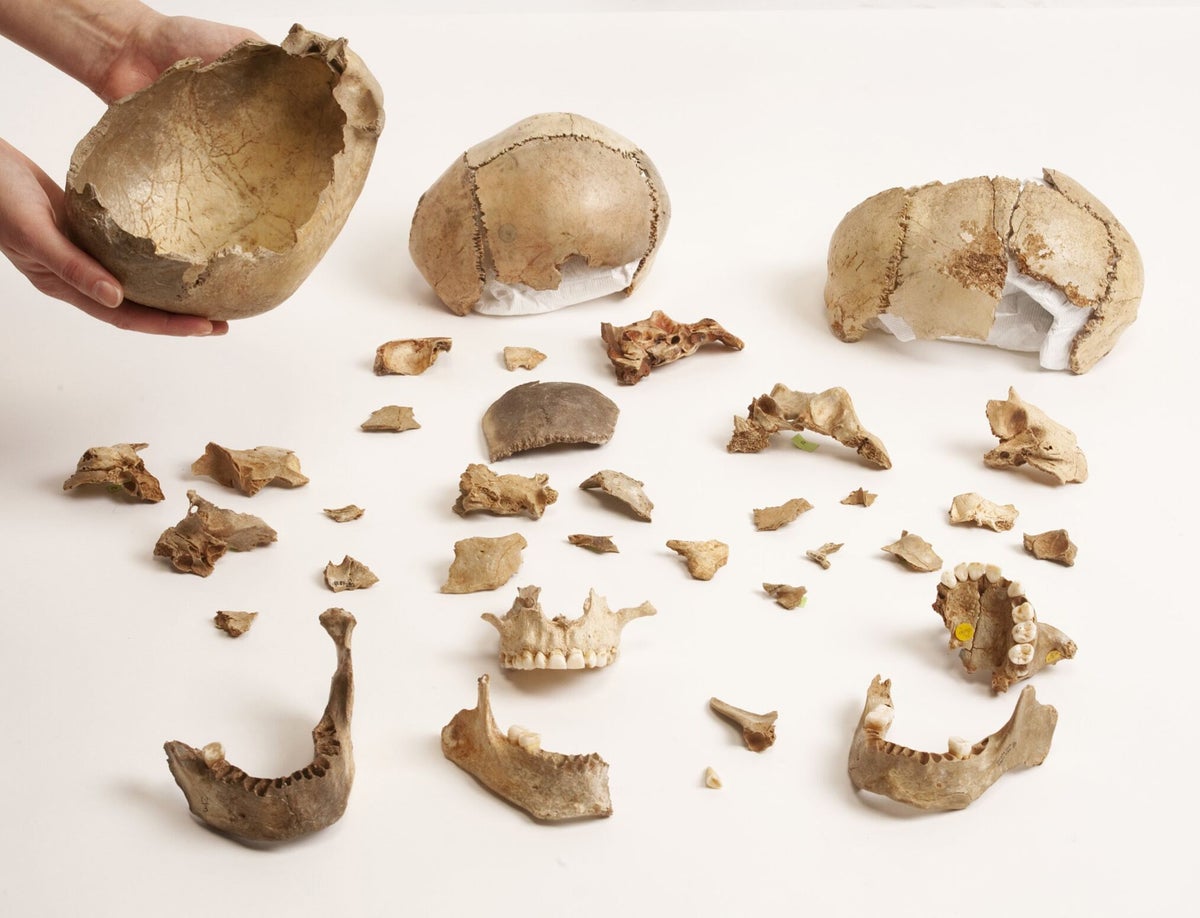
Cannibalism may have been a routine burial practice in Europe about 15,000 years ago, a new study suggests.
Researchers at the Natural History Museum (NHM) in the UK analysed remains uncovered across Europe dating to the late Upper Palaeolithic about 15,000 years ago.
The study, published in the Quaternary Science Reviews journal, found that groups of ancient Europeans across the continent who practiced funerary cannibalism carried similar genetic ancestry.
As part of the research, scientists assessed the famous Palaeolithic site Gough’s Cave in Cheddar Gorge renowned for the discovery of three manipulated human skulls into the shape of cups alongside over 100 human bone fragments modified by cut-marks, breakages, and human chewing marks.
The latest analysis suggests cannibalistic behaviour was seemingly common amongst Magdalenian human groups of northwestern Europe and that the discovery of cannibalism at Gough’s Cave was not an isolated incident.
“We interpret the archaeological evidence that cannibalism was practiced on multiple occasions across northwest Europe over a short period of time as an indication that such behaviour was part of a funerary behaviour among Magdalenian groups, and not simply practiced out of necessity,” study co-author Silvia Bello said.
“That in itself is interesting because it is the oldest evidence of cannibalism as a funerary practice so far known,” Dr Bello said.
However, scientists say in some cases bodies of the time were also deliberately buried, sometimes alongside grave offerings and cave art.
Of the 59 sites with human remains identified across Europe pertaining to this period, 13 showed evidence of cannibalism, 10 of primary burial, and two of both behaviours.
Genetic analysis of multiple sites suggests all sequenced human remains showing signs of being cannibalised have Magdalenian-related ancestry.
Map of Magdalenian sites where cannibalism has been identified as funerary behaviour— (National History Museum)
All individuals found in a primary burial context show genetic ancestry associated with Epigravettian human groups, who were the second distinct European culture of this time alongside the Magdalenian.
Researchers say both cultures were present in Europe during this period but were geographically distinct.
The new study theorises that with the northward migration of individuals with Epigravettian associated ancestry, there was an “effective replacement” of those who carried Magdalenian associated ancestry leading to the practice of cannibalism ending and burials became more commonplace.







